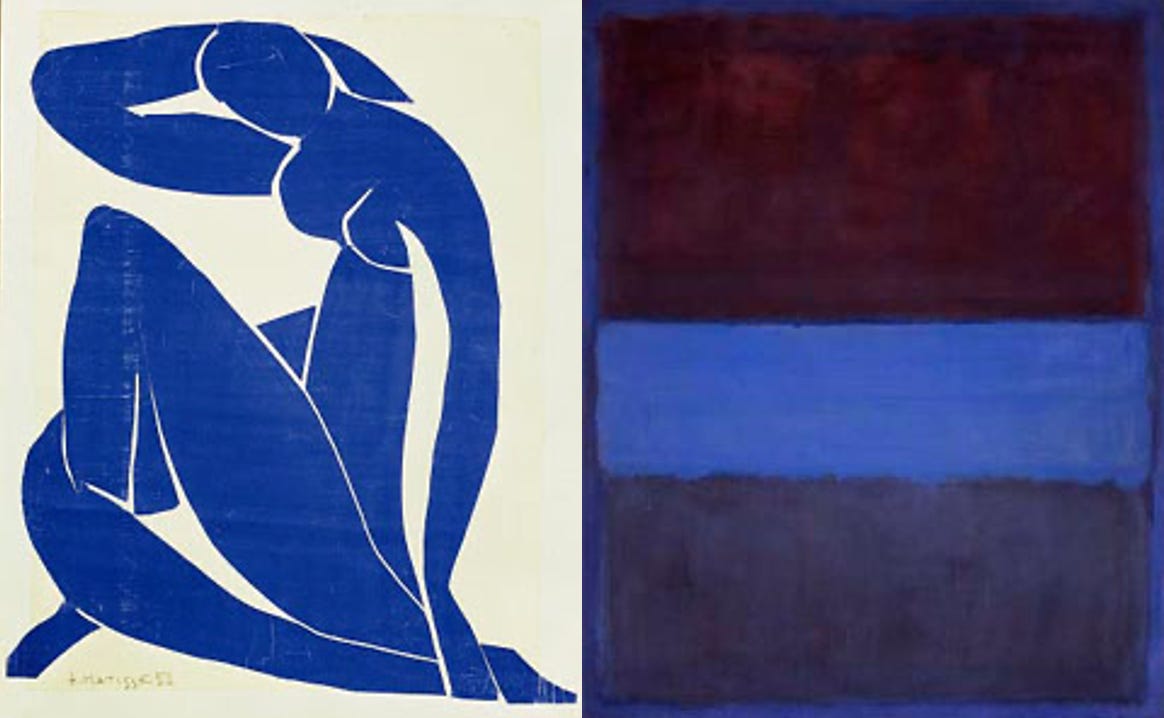Why is "right" the right direction?
A story about how we understand abstract concepts through our bodies and the space around us

Lately, I have started to focus more on improving my basic Spanish. During my recent trip to Ecuador, I was extremely lucky to engage in conversations with many native speakers. Most of the time, when I was not trying to articulate my ideas in clumsy sentences, I was listening very carefully. I wanted to grasp how the locals were expressing themselves, their natural manner of using the grammar I learnt (and didn’t learn yet), as well as trying to deduce the meaning of novel words based on the context I encountered them in.
One time, in a passionate conversation about local politics, I heard the word derecho. I knew the word! I was hearing derecho or derecha every day in the taxi: it means right as a direction. Listening to the conversation, I had an Eureka moment: they were not giving directions, they were talking about someone’s legal right!
Different languages, same connection
As I was thinking about why the two senses of derecho are connected, I realised that it is the same in English, where right refers both to the direction and to something correct, appropriate, or morally suitable. We say find the right answer, choose what’s right for you, you are the right person at the right time, it’s all right, get it right. The use of right as a noun in the legal sense is rooted in this meaning of correctness and morality, which are arguably concepts preceding law as we know it today. Right?
In Romanian, my native language, the direction is called dreapta, while drept means correct or moral, if used as an adjective, and legal right if used as a noun. In French and German, the words for right as direction (droite and Recht, respectively) are also used for a legal right.
Examples are countless, and the languages with this property span across geographical regions and language families, as you can see in this Reddit thread. Just have a look at the examples given by this language geek on r/asklinguistics:
Finnish oikea ("right (not left); right (correct)") Korean 바르다 ("to be right (straight); to be right (not left); to be right (proper), to be right (correct)"), Persian راست ("right (not left); right (just); right (true); right (straight)"), Vietnamese phải ("right (not left), right (correct)"), Sanskrit साधु ("right (straight), right (correct)"), Thai ตรง ("right (straight), honest"), Japanese 真っ直ぐ ("right (straight), honest")
The more languages I investigated, the more I thought that the connection between the right side and good things has a fundamental meaning transcending cultures, and languages are a manifestation of this connection in our brain, rather than vice versa.
I was talking about my observation with a Bulgarian friend at work, and he told me that in Bulgarian the word for right as a direction cannot be used for correctness. Later that day, however, he sent me this text:
I checked the etymology of desen (right as in direction in Bulgarian). It comes from the Proto-Slavic desьnъ, which comes from the Proto-Indo-European déḱs, which is thought to come from the Proto-Indo-Euroapean déḱos (“that which is proper”)
To me, that was the exception that confirmed the rule, showing that even in languages with different words for right as opposed to left and right as apposed to wrong, the two concepts are etymologically related. It was also interesting to notice in the etymology shared by my friend that the Bulgarian name of the right direction seems to come from the concept of good, rather than the good stuff being named as corresponding to the right side.
Imagine for a moment that in your language you don’t have the words for right and left. How would you tell a person to go to the right? Would you think to use your right side of the body as a reference? Any specific part of your body? Would you ever say things like proper, usual, suitable, correct to describe it? Are you right- or left-handed? We will come back to this.
Left is weird
In languages
When we pay a closer look at languages, not only do we realise that the rightward space is associated with positive notions, but also that the reverse is true: left is associated with negative concepts. Thus in English we use expressions like two left feet, out in the left field, left-handed compliment. What does Ava Max mean when she sings the following lyrics, in the pop banger Sweet but Psycho?
Oh, she’s sweet but a psycho / So left but she’s right, though
The Latin words for right and left are dexter and sinister, which you would recognise in English in dexterity (skillfulness) and, oh well, sinister (evil!).
In many European languages there are idioms translated as to wake up/start on the left foot, which mean to have a bad day or to do everything wrong or clumsily: levantarse con el pie izquierdo in Spanish, s'être levé du pied gauche in French, wstać lewą nogą in Polish, bal lábbal kelt fel in Hungarian, a începe cu stângul in Romanian.
If you know any expressions, in any language, in which the left side is associated with positive concepts, please let me know in the comments! I have only a few examples generated by ChatGPT in Mandarin Chinese, but they seemed to be a bit of a stretch. It's fair to say, though, that the number of negative perceptions associated with the left in languages far surpasses the positive.
In cultures
Many cultures, especially the ones influenced by Islamic doctrine, impose the use of the left hand for unclean business such as using the restroom, while the right hand is used for eating and greeting. The same separation is imposed for the feet: the left foot is used to enter the bathroom, while the right foot is used to step in the mosque.
I learnt that in Ghana even today it is prohibited to use your left hand for gesticulating. People would put their left hand behind their back while talking to you, and if they carry something in their right hand when they see you, they would still try to wave at you with the occupied right hand. If it is absolutely unavoidable and they do have to use their left hand, they would tell you Sorry for left.
Only around 10% of the people are left-handed. Truth is, like any other minority, left-handed people have had a hard time throughout history. In Europe in Middle Ages for example, if you were a leftie woman, you would have been labelled as a witch and executed.
The bias against left-handers is not only present in monotheist religious cultures. When thinking about this, I remembered my ambidextrous friend from China, who, when her family realised she is left handed, was forced to use her right hand in writing. Many educational systems across Asia force the children to write with their right hand, and this was also a practice throughout the Soviet Union.
Mapping abstract concepts in the horizontal line
Why, across cultures and languages, does right seem to be associated with good and left with bad? It is worth noticing that the horizontal line is used to represent other abstract concepts alongside valence, such as time and numbers.
For example, if your native language is English, you might imagine time as flowing through a line from left to right. Equally, you would represent numbers on a horizontal axis where the bigger numbers are represented on the right. Turns out, this is not a universal representation, and it is in fact associated with the fact that English is written from left to right. In the minds of people whose language is written from right to left, such as Arabic, Hebrew or Persian, time and numbers might flow from right to left instead. Take a look at this Medium article about charts in right-to-left languages, which shows how data visualisation is impacted by the writing system of the speakers.
Something interesting I found is called the SNARC effect (spatial–numerical association of response codes), which is the association of small numbers with left space and large numbers with the right. Dehaene et al tested the SNARC effect for three groups of people: Canadians (English and French speakers), who read both words and numbers from left to right; Arabic speakers from Palestine, who read both words and numbers from right to left, and Hebrew speakers from Israel, who read words from right to left, but numbers from left to right. The participants were shown numbers on a screen and they had to choose their parity by clicking either left (for odd numbers) or right (for even numbers). The SNARC effect in this context is manifested by a correlation between faster response times and clicking on the left for small numbers and on the right with larger numbers. Canadians statistically shown a SNARC effect, while the Palestinians shown a reversed one, associating bigger numbers on the left and smaller numbers on the right. Interestingly, the Israeli group didn’t show any conclusive effect, which demonstrated that reading habits for both words and numbers contribute to the spatial representation of numbers in people’s minds.
If time and numbers follow a line whose direction is established by the writing system of your native language, could it be the same for good and bad? If that was the case, the right to left languages would not have the same Right is Good, Left is Bad mapping, or would have it reversed. However, the same associations are present in right to left languages too!
This suggests to me that this seemingly universal association is coming more deeply from within us; it is a sort of constant in ourselves. Maybe it’s something stemming from our brain, which has developed specialisations of the left and right hemispheres for approaching (good) and avoiding (bad) situations. Once a biological reason like this manifests into a language, the language itself reinforces the preference for right in its speakers, on a subconscious level.
Left feels right for left-handers
Another possibility, however, is that the Right is Good, Left is Bad association in languages and cultures comes directly from how our bodies interact with the space around us. The vast majority of people are born with a dominant hand, and therefore interact more fluently with the respective side of the reality they observe. For this reason, if you are right-handed you might perceive the right side as the good one, the one you feel more confident in. As I hinted before, if you want to come up with a description for the right direction, you might use the same words you use for good, fluent, something that feels right. By virtue of statistics, since the majority of people are right-handed, this mental metaphor might have propagated (and then reinforced itself) in languages and cultural views.
How can we test if the Right is Good, Left is Bad mapping is body-specific or universal (stemming from either the properties of the human brain and mind, or from patterns in language and cultures) ? If it was universal, then both right- and left-handers would have a preference for associating good with right and bad with left. However, if the mapping is body-specific, since left feels right for left-handers, they would associate good with left and bad with right, opposite as right-handers.
Casasanto, D. (2009) tests this hypothesis through a task where left- and right-handed participants are given a cartoon image with a character and 2 boxes, one to the left and one to the right. They are told that the character likes certain animals and is afraid of others, and they had to doodle a good animal in the box that best represented good things and a bad animal in the box that best represented bad things, like shown in the diagram below.
The study also used a control experiment, with the same task on the vertical axis, with a box up and one down. Regardless of handedness, people are exposed to the same linguistic and cultural conventions that associate up with good and down with bad, and studies (e.g. Barsalou et al, 2013) have shown a strong correlation between having an upright body posture while performing certain tasks and increased positive mood and confidence. Therefore, both right- and left-handers should tend to place the good animal on top and the bad animal on the bottom.
Indeed, the study shows that the majority of left-handers drew the good animal on the left, while the majority of right-handers drew it on the right. Meanwhile, the majority of participants placed the good animal in the upper box in the control experiment, regarding of dominant hand.
Interestingly, the paper further shows that the same bias is observed when participants don’t use their hands to perform the task, and instead indicate orally which box to use for the good animal. This demonstrates that the results are based on the internal representations of good and bad in our minds (which are different depending on our dominant hand), rather than simply a preference for the side that is easiest to interact with in the moment of drawing.
Abstract concepts, embodied
The mind and body can’t be separated. The mind influences the body, and the body influences the mind. We understand concepts by interacting with the world around us, and our body is the portal we use to connect with the world. We learn what colour is by seeing it, we understand pain and happiness by feeling them in our bodies, we create representations in our minds for everything we touch, see, smell, hear and feel.
It is mesmerising to me, though, that our bodies help us conceptualise even the concepts we believe to be abstract, such as good or bad. We don’t interact directly with abstract concepts through our senses. We can’t touch a number, we can’t smell the truth, we can’t see logic or virtue. We can only think about these things. But thoughts are like simulations, and we, unseparable from our bodies, are an active part of our mental simulations. People with different bodies will therefore build, through thoughts, different representations of even the most abstract concepts. If our dominant hand plays a role in how we make sense of good and bad, what other traits of our unique bodies could shape how we think about the world, and, as a direct result, the languages we speak?

References and recommendations:
Embodiment of Abstract Concepts: Good and Bad in Right- and Left-Handers - Casasanto, D. (2009), Stanford University and the Max Plank Institute for Psycholinguistics
Language and Space - Levinson S.C. (1996), Max Plank Institute for Psycholinguistics
AI in the woods - thinking in space
A cool video about navigating meaning and space - Aurelie Herbelot






This was a brilliant read ☺️